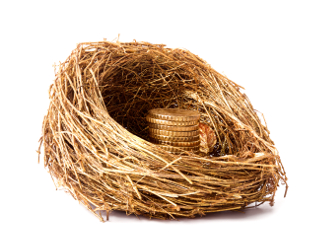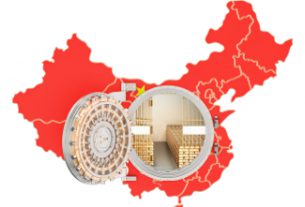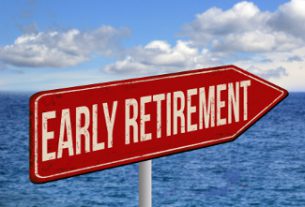Thanks to the stock market’s performance since 2016 there are now more 401(k) millionaires than ever. It’s pretty heady stuff to think that you’re a millionaire, but many of these newly-minted paper millionaires don’t realize just how fragile their wealth can be. All it takes is a severe stock market crash and all that hard-earned savings and investment can disappear.
Investors who know that take the necessary steps to protect their assets before a crisis hits. They see the signs that a crisis is approaching and take precautions to safeguard their wealth. Because of their foresight, they’re able to keep most of their wealth intact, whereas others are not. By the time the crisis becomes apparent to most investors, the worst of the damage has already been done.
Protecting your assets before they decline in value often means transitioning out of assets such as stocks and into assets such as gold, and before stocks reach their peak. It can be tempting to hold on for every last penny of gain, but once markets have peaked the psychological incentive to keep holding on for a “recovery” overrides the understanding that you need to cut bait and be happy with what you have. And right now there are three major factors at work that make the prospect of a stock market crash in the near term much more likely.
1. Federal Reserve Hiking Rates
After nearly a decade of near-zero interest rates, the Federal Reserve began hiking its target federal funds rate late in 2015. After nearly three years of hikes the federal funds rate is still only at 2.00-2.25%, a historically low level. Yet even those minor hikes are enough to start slowing the economy.
So many firms had become dependent on cheap debt during the ZIRP (zero interest rate policy) era that hiking interest rates has made the cost of doing business significantly more expensive. That weighs on business activity and will require businesses to cut costs somewhere, whether that’s investment in production, research and development, or hiring. All of that will have a negative effect on their bottom line and therefore also their stock price.
2. Trade War With China
The ongoing trade war with China hasn’t even really begun yet. With a huge increase in tariffs on Chinese goods set to take effect at the beginning of 2019, prices for American consumers are about to get much more expensive. Firms that have relied on Chinese raw materials as inputs have already seen their business fall away after having to pass costs on to customers.
Once the full impact of tariffs hits all across the board, consumers will feel the pain too. That will result in a reduction in consumption as consumers have to pinch their pennies. Many businesses will be affected as a result, which will result in a decrease in production and eventual layoffs.
3. Democratic Takeover
With the recent takeover of the House of Representatives, markets don’t know what to expect. While a split Congress should theoretically mean that neither party gets its way, it also means that much-needed tax relief, spending cuts, or other fiscally sound legislation might not see the light of day. If Congress ends up not being able to make headway on major issues, it could result in President Trump deciding to take more unilateral action through the use of executive orders. Markets wouldn’t react well to that, since that is a much more unpredictable means of enacting policy.
The other possibility is that President Trump decides to deal with Democrats in making policy, which could lead to compromises that include shifting tax burdens and increasing government spending in various areas. That could also lead to a reduction in business activity, depending on what exactly happens.
Protect Your Assets Before It’s Too Late
All three of these factors combine to make a perfect storm affecting investors. Trying to stay in markets once they’ve already peaked and without making plans to protect your assets is being penny wise and pound foolish. Where most investors go wrong is in trying to maximize their asset growth on the upside while not protecting themselves against the downside. And as many found out the hard way in the aftermath of the dotcom bubble and the financial crisis, there will always be a downside.
But what if it were possible to protect yourself against the downside while still growing your assets? That’s exactly what gold does. While stocks lost over 50% during the financial crisis, gold gained 25%, and continued to gain value after the financial crisis was over. Gold has served as a hedge against inflation, crisis, and calamity for generations. And with modern developments such as gold IRAs, investors can invest in gold with existing retirement assets while maintaining all the tax advantages of traditional retirement accounts.
Investors who moved just 30% of their stock holdings into gold before the financial crisis saw their portfolios worth 60% more during the worst depths of the crisis than had they kept 100% of their assets in stocks. That’s the power gold has to protect the nest eggs of investors who have the foresight to take advantage of its protective abilities. Don’t let yourself be one of those who fails to take action until its too late.
This article was originally posted on Goldco.





